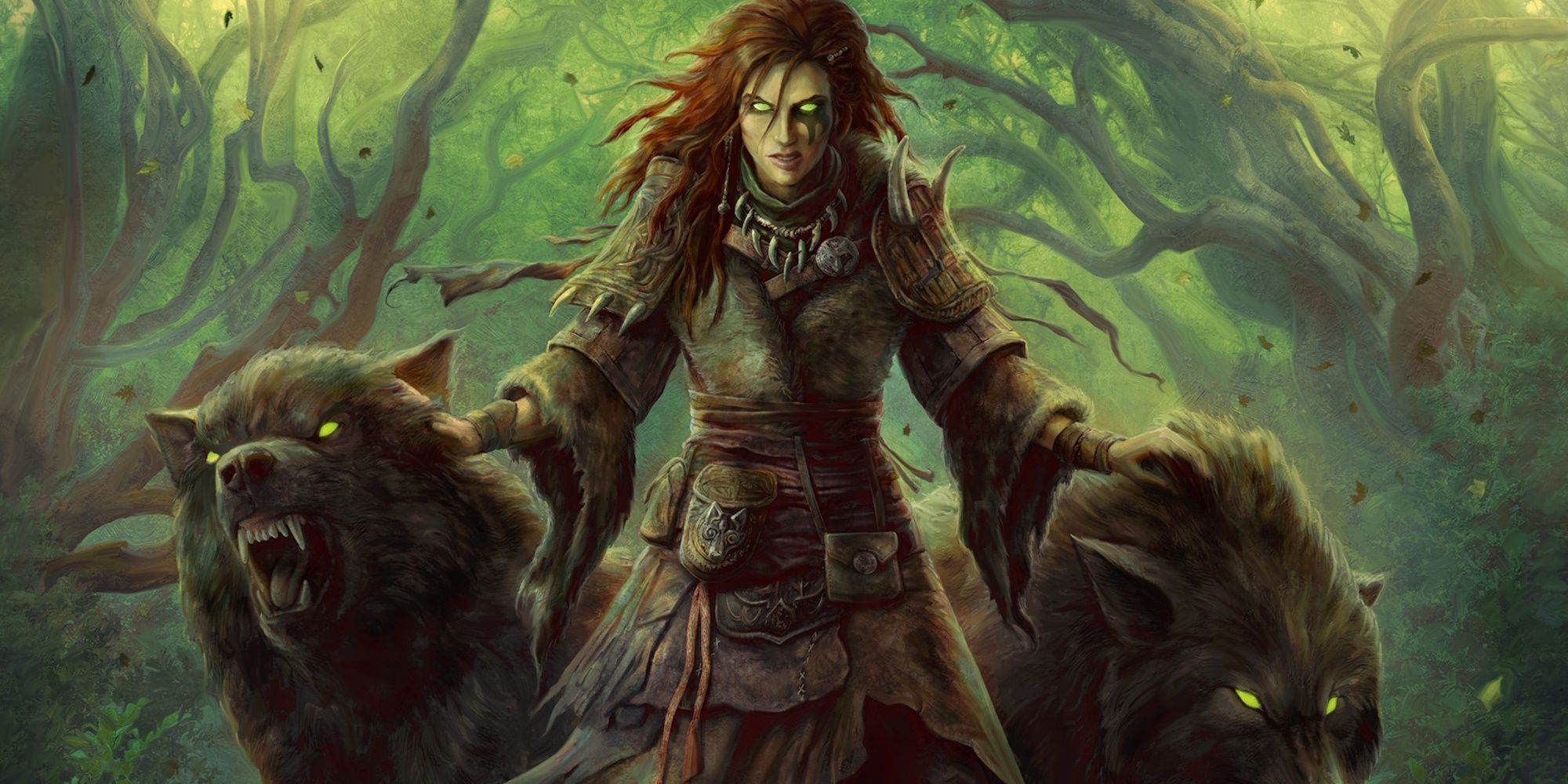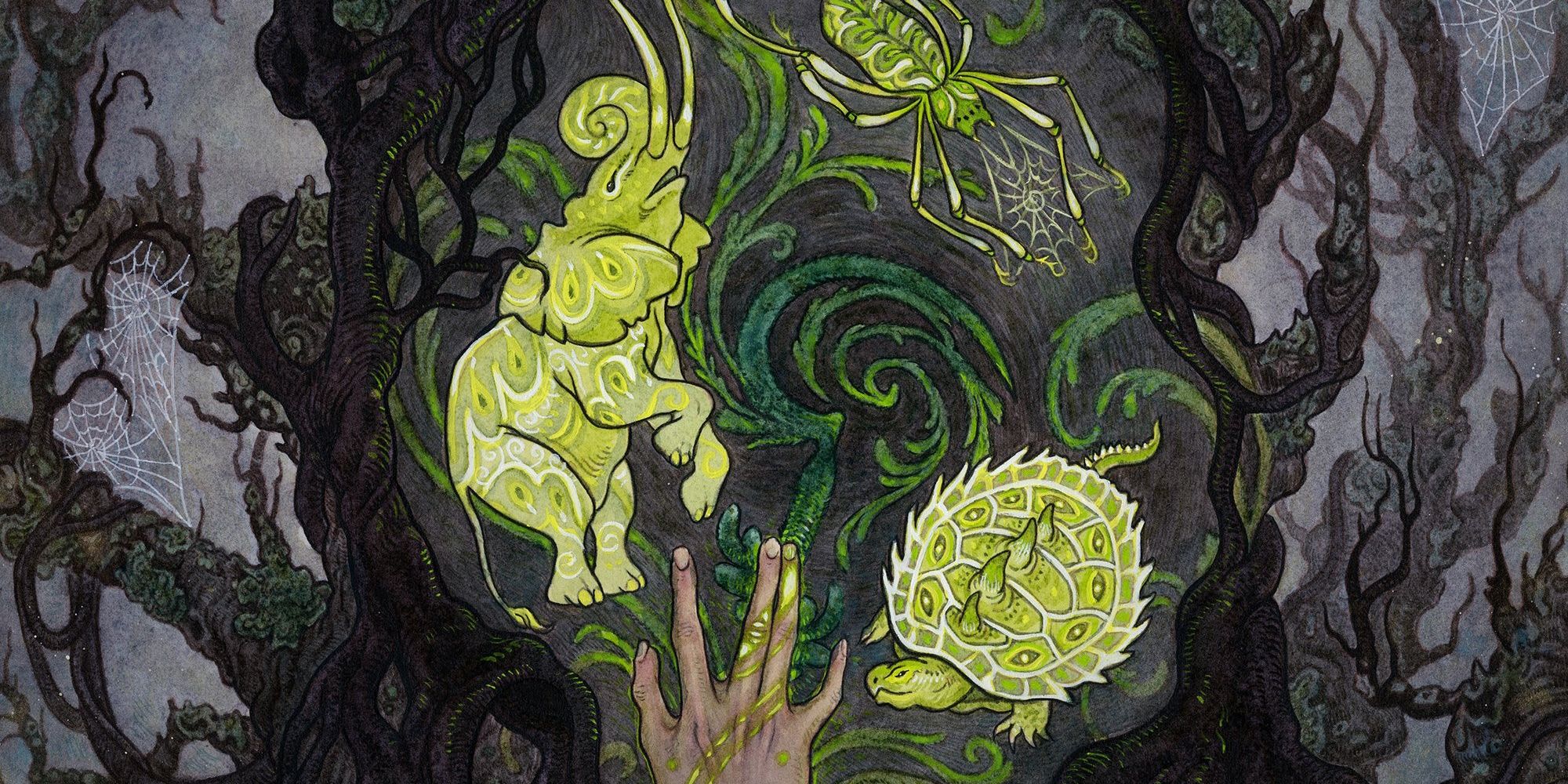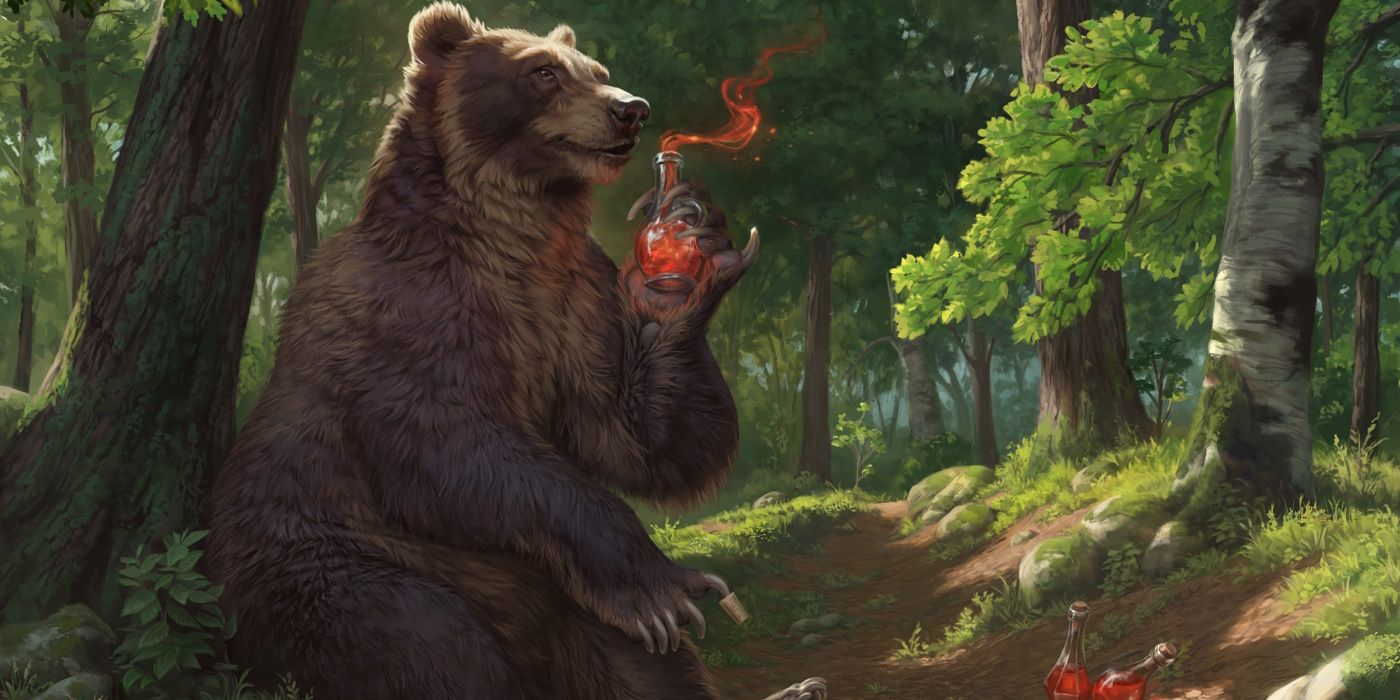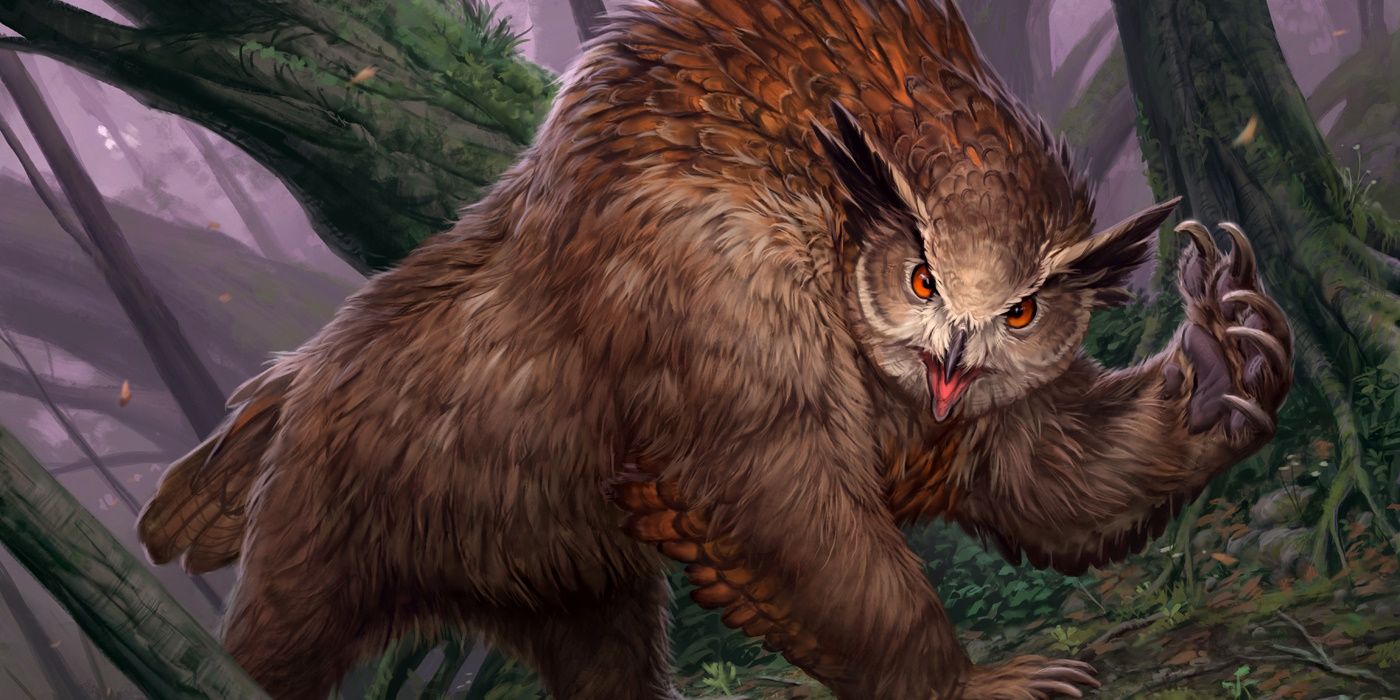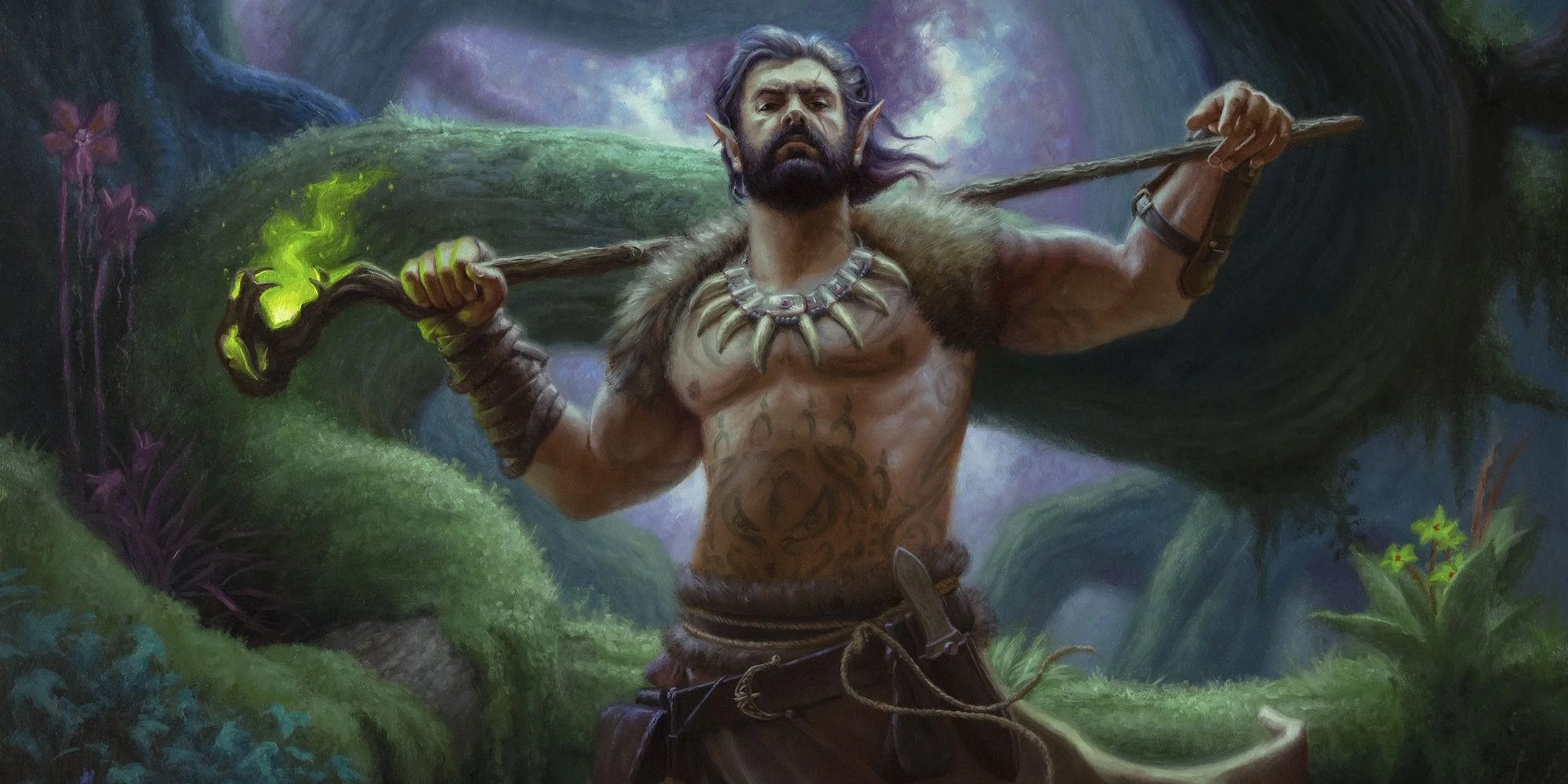Quick Links
In Dungeons & Dragons, the Druid class is capable of casting powerful spells that utilize the power of nature. In addition to its impressive spellcasting capabilities, one of the most iconic elements of the Druid class is Wild Shape.
Available to all Druids as early as level two, Wild Shape allows a druid to assume the form of an animal, gaining benefits based on the animal a Druid chooses to transform into. While this ability is incredibly versatile, benefiting a Druid both in and out of combat, it is among the most complex class features in the game. So we're going to explore everything you need to know about Wild Shape.
Updated July 22, 2023, by Sean Murray: Being a Druid means being able to soar with the eagles, dig with the moles, and run free through the forest as part of a pack of wolves. Or, as is so often the case as an adventurer, it means turning into a fly on the wall to eavesdrop on clandestine conversations or to find those pesky dungeon keys to break your party out of jail.
Wild Shape is one of D&D's most potent abilities, which is why we've refreshed this guide with improved formatting and more tips on how you can get the most out of your bestial form.
What Is Wild Shape
Wild Shape is a multifarious and flexible feature that can be used as an action up to two times per long rest, allowing a druid to assume the form of an animal for up to a number of hours equal to half the druid's level. By default, the types of animals that a Druid can become are based on their level.
Druids can assume the forms of animals with the following challenge ratings and features based on their levels seen below:
|
Level 2+ |
Beasts with a CR no greater than 1/4 that lack flying and swimming speeds. |
|---|---|
|
Level 4+ |
Beasts with a CR no greater than 1/2 that lack a flying speed. |
|
Level 8+ |
Any beast with a CR no greater than 1. |
Despite taking on an animal form, it's important to note that while transformed the Druid retains their mind. This means that not only do they retain their Intelligence, Wisdom, and Charisma ability scores, but they also retain their skill and saving throw proficiencies, even gaining any additional proficiencies that a given beast form may provide.
Additionally, while Druids are primarily spellcasters, Druids are incapable of casting spells whilst in their animal forms as they lack the means of using verbal and somatic components. However, it's important to note that Druids are still capable of concentrating on spells while transformed.
This is key as many of the Druid class's most powerful spells require concentration. This means that if a concentration spell is cast, it can still be used to great effect if a druid activates Wild Shape during their following turn.
Perhaps the most important aspect of Wild Shape is that regardless of a Druid's current HP, upon transforming into a beast, a Druid's HP becomes that of the beast.
Once the beast form's HP is reduced to zero or if the Wild Shape is ended prematurely as an action, the Druid's HP returns to its total prior to Wild Shape being activated. If this reversion is caused by damage, any remaining damage is dealt to the Druid's original HP.
This effectively allows Druids to provide themselves with a substantial pool of additional HP through the use of Wild Shape.
Wild Shape And Class Features
One stellar benefit of Wild Shape is that a Druid within an animal form is still capable of accessing their class features. Not only does this allow Druids to utilize many of their impressive subclass features, it substantially enables Druid multiclass builds.
For example, while under the effects of Wild Shape, a Druid/Fighter multiclass could still active their Action Surge, a Druid/Barbarian multiclass could still activate their Rage, and a Druid/Rogue multiclass could still access Cunning Action.
How To Get The Most Out Of Wild Shape
First and foremost, it's important to know that for most Druids, Wild Shape is a defensive utility option rather than an offensive one.
As the majority of Druids are incapable of assuming the form of a beast with a challenge rating higher than one, they will get substantially more damage through casting their spells rather than biting or clawing with their beast forms.
However, as previously mentioned, a Druid assuming a bestial form with Wild Shape can still concentrate on their spells. Additionally, a Druid is temporarily able to use that beast's HP rather than their own.
This means that a Druid can cast a concentration spell, then gain additional HP and mobility through the use of an animal form, allowing Druids to function as some of the most durable spellcasters in D&D.
Furthermore, outside of combat, as Wild Shape allows Druids to assume animal forms for several hours, it's a perfect option for an unassuming disguise as well as an easy means of providing reconnaissance once flying forms are accessible.
Here are some suggested beast shapes a Druid can transform into, organized by their challenge rating (CR):
|
CR |
Beast |
Fly/Swim |
|---|---|---|
|
0 |
Rat |
|
|
0 |
Owl |
Fly |
|
0 |
Cat |
|
|
0 |
Crab |
Swim |
|
1/4 |
Giant Owl |
Fly |
|
1/4 |
Wolf |
|
|
1/4 |
Elk |
|
|
1/4 |
Giant Frog |
Swim |
|
1/2 |
Crocodile |
Swim |
|
1/2 |
Reef Shark |
Swim |
|
1/2 |
Ape |
|
|
1/2 |
Giant Wasp |
Fly |
|
1 |
Brown Bear |
|
|
1 |
Giant Eagle |
Fly |
|
1 |
Giant Spider |
|
|
1 |
Giant Toad |
Swim |
|
1 |
Dire Wolf |
|
|
1 |
Giant Octopus |
Swim |
Circle Of The Moon Druid
By and large, the easiest way for a Druid to improve their Wild Shape is to choose the Circle of the Moon subclass at level two. Unlike other Druid subclass options that prioritize the class's magical capabilities, Circle of the Moon Druids are built around improving their Wild Shape feature.
While most other Druids can Wild Shape into beasts of CR one or less, a Circle of the Moon Druid substantially raises the ceiling on potential animal transformations. Not only can these druids access CR one animal forms at level two, but their CR cap for potential animal transformations also increases as they gain levels.
Here are the challenge ratings of beasts which Circle of the Moon Druids can wild shape based on their level:
|
Levels 2-5 |
CR 1 |
|---|---|
|
Levels 6-8 |
CR 2 |
|
Levels 9-11 |
CR 3 |
|
Levels 12-14 |
CR 4 |
|
Levels 15-17 |
CR 5 |
|
Levels 18-20 |
CR 6 |
As previously mentioned, it's usually optimal for Druids to utilize animal forms for defensive purposes. While these higher CR animal forms provide yet even more additional HP for a Druid, some of these forms can pose a damaging threat, allowing Circle of the Moon Druids to use this feature offensively.
Here are some suggested beast shapes a Circle of the Moon Druid can transform into at higher levels:
|
CR |
Beast |
Fly/Swim |
|---|---|---|
|
2 |
Polar Bear |
Swim |
|
2 |
Saber-Toothed Tiger |
|
|
2 |
Giant Constrictor Snake |
Swim |
|
2 |
Quetzalcoatlus |
Fly |
|
3 |
Giant Scorpion |
|
|
3 |
Ankylosaurus |
|
|
3 |
Killer Whale |
Swim |
|
4 |
Elephant |
|
|
4 |
Giant Walrus |
Swim |
|
5 |
Giant Shark |
Swim |
|
5 |
Triceratops |
|
|
6 |
Mammoth |

